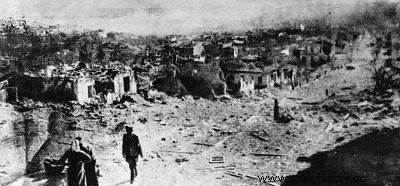
To defend Sevastopol, the Soviet coastal army had almost 106,000 men, 600 guns, about 100 mortars and 38 tanks; the Soviet perimeter defense airfields lined up 55 airworthy aircraft. For its part, the 11th German army was strong with 204,000 men, 670 guns - of calibers ranging from 76 to 800 - 450 mortars, 720 tanks and 600 planes. To isolate the city from the sea, the Germans employed a fleet of coastal warships based at Yalta, Evpatoriya and Feodosiya. After five days of artillery preparation and aerial bombardment, the first assault troops went into action on the morning of June 7. The main thrust, entrusted to the 54th corps, was exerted in the BelbekKamychly sector. The 30th Corps, meanwhile, was pressing along the Yalta highway. The Germans had hoped to dislocate the front and reduce the defense little by little, but the Soviets resisted fiercely and the attackers had to stop after some local successes. They did not succeed in breaking through to North Bay until June 18, after the arrival of reinforcements detached from the XVII Army. On the 23rd the Russians withdrew to the south of the bay, thus maintaining their front, but their situation was now hopeless. Ammunition was running out and, after the 26th, no surface ship was able to bring reinforcements and equipment to the besieged city. On the night of the 28th to the 29th, the Germans established a bridgehead on the southern shore of North Bay. And when they entered Sevastopol on July 3, the evacuation began.
